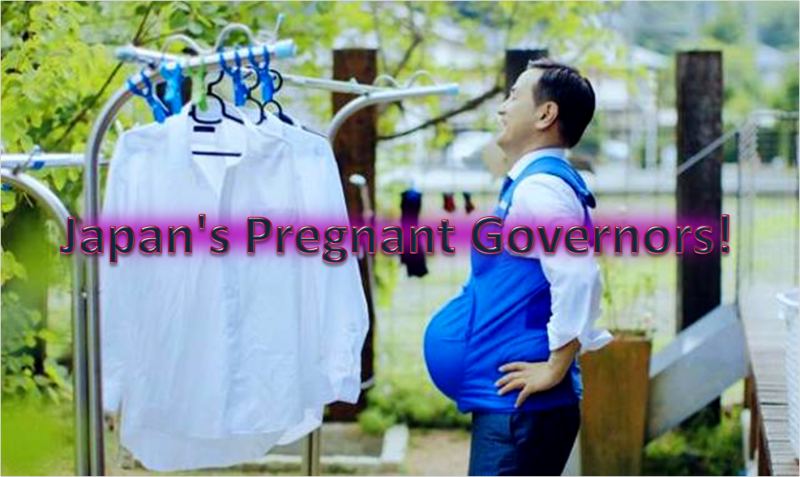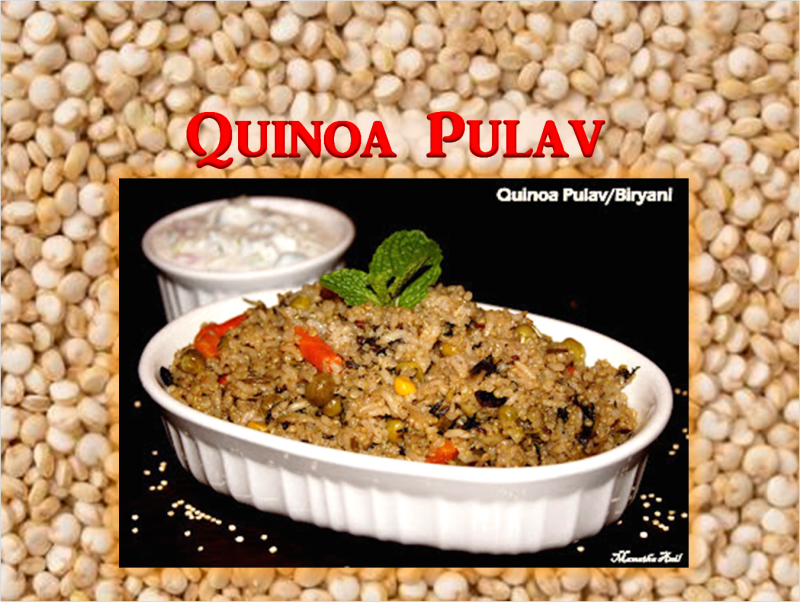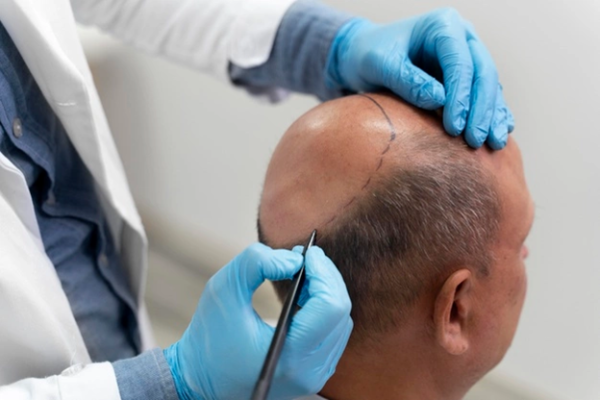5 Effective Weight Loss Tips
Author: HealthyLife | Posted on: December 31, 2021
« Healthy Tips To Get Rid Of Hiccups Preventing suicide in students »

Homemade natural stuffs are sometimes as effective as store bought chemicals. Using simple solutions, we can remove fabric stains at home. If you do not like to use chemicals then try some of the following methods to remove tough stains at home.
It is important to remove stains as soon as it gets on the fabric. Do not allow stains to sink in.
Some of the common stains are: yellow stain, ink, fruit jam, blood stain and chocolate stains.
Yellow stain:
1. Baking Soda, Peroxide, and Water
2. White Vinegar and Salt
3. Toothpaste
4. Lemon Juice
5. Denture tablet:
Chocolate Stains :
Berry Stains :
Tomato Stain :
Ink Stains :
1. Soak stained cloth in alcohol based product like hairspray. This will dissolve the ink.
2. Dab the stained area using an absorbent cloth until ink comes out.
3. Repeat the steps 1 & 2 if necessary and the wash the cloth using detergent.
Oil Stains :
1. Apply dishwashing liquid or washing detergent on oil stains. Soak in for few minutes.
2. Use hot cycle, and repeat if necessary.
Blood Stains :
1. Prepare salt paste using cold water.
2. Rub the salt paste on the stain and leave it for half an hour.
3. Rinse cloth using cold water.
Remember: If it is blood stain – do not allow stain to settle down on the fabric. Quick action is necessary to remove the bloodstain.
Wine stains :
1. Blot or dab the excess liquid on fabric.
2. To stop steeping wine stain into fabric, apply salt to soak excess liquid
3. Neutralize stain by applying white wine.
4. Prepare baking soda paste using little water and apply on the stain.
5. Wash using mighty detergent.
Unlike store brands, homemade stain removers will not have regulated formula. You might have to repeat the steps once or twice more depending on the intensity of the stains on fabric.
Image credit: https://www.pxfuel.com/en/free-photo-ocipb (Free for commercial use)

This experiment was conducted in Japan to help and support economy and bring educated women to into the workforce as a top priority to fix the economy, heeding calls to make better use of a highly educated but underemployed labor pool.
A woman while working inside home and outside at a job to earn money for the family has to do lot of chores. In Japan, studies revealed that men only did approximately one hour of chores everyday while women engaged in about five hours of chores.
Japanese men are not very helpful husbands when it comes to housework: they do just one hour of unpaid work daily compared to five hours for their wives, according to a 2014 study by the 35-nation Organisation for Economic Co-operation and Development.
Watch Men in pregnancy video here:
To encourage Japan’s salary men to help out at home, the Kyushu Yamaguchi Work Life Promotion Campaign created a video that showed three male governors in Japan experiencing a day in the life of a pregnant woman.
In response to these studies, the governors of the Saga, Miyazaki, and Yamaguchi prefectures put on pregnancy suits to attempt to understand what women endure when they’re expecting.
A trio of male Japanese politicians- the governors of the Saga, Miyazaki, and Yamaguchi prefectures has gamely strapped on “pregnancy vests” that simulate swollen bellies in a lighthearted campaign for men to pick up the slack in a nation where women do most of the housework. These politicians strap on a 16-pound vest to simulate pregnancy. Though it doesn’t simulate any of the side effects of pregnancy, the sheer weight of the suit has caused 97% of men to agree that men need to be involved more in the home and with child-rearing after wearing the suit. Very quickly, they learn how even simple household tasks can be a major pain when carrying around that extra weight.
The three-minute spot, which started running last week, shows the hapless lawmakers being outfitted with seven kilogramme (16 pound) vests that mimic the belly of a woman who is about seven months pregnant. Then it is time to clumsily navigate stairs, carry groceries, or wait for someone to give up their seat on the bus. One politician struggles to put on socks, while another wipes sweat from his brow after hanging a load of laundry, as an upbeat tune plays in the background.
“I really didn’t understand,” admitted one of the participants, Yamaguchi governor Tsugumasa Muraoka. “Now that I understand what my wife put up with for so many months, I’m full of gratitude.”
“I can see how hard it is to be carrying a child and do house chores,” says 52-year-old Shunji Kono, the governor of Miyazaki prefecture. “I think I have to be much kinder,” the father of three adds in the above video.
Prime Minister Shinzo Abe has made drawing more women into the workforce a top priority to fix the economy, heeding calls to make better use of a highly educated but underemployed labor pool.
References:

Quinoa (KEEN-wah) is one of the healthiest food recommended by nutrition experts. It is gluten free and high in protein. It contains nine essential amino acids and supplies high amount of fiber, magnesium, B-vitamins, iron, potassium, calcium, phosphorus, vitamin E and various beneficial antioxidants. All these good benefits made quinoa to add in the list of “super foods”. For Inca empire Quinoa was an important crop. Inca people referred to it as the “mother of all grains” and believed it to be sacred. There are three main types of quinoa available in market – white, red and black. Even though technically it is not a grain, it still counts as a whole grain food. All varieties of quinoa have similar values. One cup of quinoa gives 222 calories, with 39 grams of carbs and 4 grams of fat. It also contains a small amount of omega-3 fatty acids.
Try the gluten-free Quinoa pulav today for a change.
Ingredients:
Method:
1. Wash and cut the vegetables. Keep aside.
2. Wash the quinoa and rice 2 times and soak for 30 minutes in 3 cups water.
3. Heat oil in a pressure cooker, add cloves, cinnamon, peppercorns, cardamom, black cardamom, aniseed, black cumin and bay leaf. Fry them.
4. Add green chillies fry, add chopped onions fry, add minced ginger and garlic fry.
5. Add mint and some cilantro fry. Add cut vegetables and salt. Cook for few minutes. Add green peas and cook for 2 minutes.
6. Add soaked quinoa, rice and the water in which it is soaked. Add yogurt, mix well. Add balck cardamom and clove powder, add biryani pulav masala mix well.
7. Add lemon juice, remaining cilantro and salt. Cook for few minutes in low to medium heat then cover the lid and cook in medium heat till 1 or 2 whistle.
8. Quinoa pulav is ready to serve. Serve with Raita.
Recipe by: Mamatha Anil @ http://bhakshyabhojana.blogspot.com/

Hair transplants are becoming increasingly popular and common. Many people struggle with thinning hair for a variety of reasons.
“Thinning hair can affect someone’s self-esteem, whether it’s caused by age or other underlying conditions. Hair transplants are performed for cosmetic reasons by some people, which is perfectly acceptable,” says Dr. Ankur Singhal, who has among the leading hair transplant centers in India.
Regrow Hair Clinic’s Medical Director, Dr. Ankur Singhal, specializes in two advanced cosmetic and hair transplant procedures FUE and Dense Hair Implantation.
There are some effective treatments for hair loss, but nothing beats hair transplants for speed and effectiveness.
The procedure can be painless and straightforward with today’s technology. The importance of aftercare, on the other hand, cannot be overstated.
Many plastic surgeons will provide post-surgery instructions, as would a plastic surgeon Singapore, which you should carefully follow. For more information on hair transplants, continue reading.
According to Dr. Ankur Singhal, the expert hair transplant surgeon from India, the most prevalent and requested hair rejuvenation procedures are follicular unit transplantation (FUT) and follicular unit extraction (FUE).
These procedures entail removing healthy specific hair follicles from a donor area on the scalp with thick hair development and transplanting them to bald spots or pattern baldness areas (recipient area).
The specialist will pierce minute cuts within the scalp for natural-looking results and implant the follicular grafts with special consideration and precision.
The grafted skin strip may have a linear scar, but this will be hidden when more hair grows naturally around the area.
After you’ve had your hair transplant surgery, you’ll need to take care of yourself.
“Taking hair from the same scalp and transferring it to another area is one thing. However, because it is still surgery, there will be some side effects, even minimally invasive,” says Dr. Ankur Singhal.
It can take 2 to 3 months for new hair follicles to accept and grow new hair after the transplant fully.
The new hair growth may be uneven at first, but it will eventually fill in. Most patients see their desired results in 10 to 12 months, though this can vary depending on the amount of hair transplanted and the patient.
According to Dr. Ankur Singhal, the excellent hair transplant surgeon, you can only get a full head of newly grown hair if you’re willing to put in the effort for the aftercare.
Let your hair air dry for a few days before washing it. Because your scalp may still be sensitive, use the gentlest strokes possible when washing your hair, especially on the newly grafted areas.
Don’t be alarmed if a few hair strands fall out. This is normal as long as the amount of hair fall is within your normal range.
Shampoos are essential, especially those designed to address specific hair issues such as dandruff and hair loss.
Whenever possible, use organic and gentle shampoos. You could also try baby shampoos, which are specially formulated for sensitive baby skin.
You can still comb your hair if you want to. When brushing out tangles, don’t go at it with your usual zeal.
It’s best to use your fingers to untangle the knots. If you need a brush or comb, make gentle strokes rather than pressing them into your scalp.
Because of the sensitivity of your scalp, exposing it to the sun for an extended period can easily result in sunburn.
That isn’t to say you won’t be able to go to the beach after your procedure. Protective hats can be worn, but make sure they are loose and the right type for your head shape.
“Although hair transplant is a minimally invasive cosmetic procedure, it can still have unfavorable side effects if the patient is not informed,” says Dr. Ankur Singhal.
Because the procedure may cause pain, your doctor may prescribe over-the-counter pain relievers. Swelling is to be expected not only around the grafted area but also across your entire scalp.
Itching is also a possibility. When this happens, keep your fingernails away from your scalp to avoid irritating it and causing bleeding or broken skin.
These are fairly common and expected side effects, and they should subside in a week or so. If they persist, make an appointment with your surgeon for a checkup.
Patients who have had hair transplants are usually advised to wait for a minimum of ten days before wearing headpieces such as hats, headbands, hoodies, and other accessories.
Consult your doctor first if you want to wear one. The consensus is that a loose, easily adjustable cap can be worn, but this depends on the type of hat.
To allow your scalp to breathe, don’t wear it for more than 6 hours at a time.
You can also change your wardrobe to avoid coming into contact with your scalp.
Choose button-downs or tops with wide necklines so you can easily slip your head in. Remember to take care of your accessories and clothing the way you did when you put them on.
During the healing process, your best words are gentleness and caution.
Featured image link:- https://www.freepik.com/free-photo/man-going-through-follicular-unit-extraction-process_18737148.htm
Featured image credit:- Medical photo created by freepik – www.freepik.com
Content image link:- https://www.freepik.com/free-vector/stages-hair-loss-hair-treatment-hair-transplantation-hair-loss-bald-care-health-haor-human-hair-growth-vector-illustration_11060961.htm
Content image Credit:- Lines vector created by macrovector – www.freepik.com

We are all susceptible to feeling down every now and again, but we are all equipped with the necessary solutions that just have to be discovered.
The main philosophy employed by the happiest includes the idea that life’s simply too short: life is too short to let things get you down, to take things for granted, to pursue absolute and unrealistic perfection.
For some, employing these characteristics is a second nature – they do it without knowing. For others, a conscious effort must be put forth every now and again. Self-Awareness is key factor that plays major role in achieving happiness.
Here are some reasons why people are happy inside and out:
1. They Manage Their Expectations
They’re not crushed when they don’t get what they want – or misled into expecting to get the most out of every situation. They approach every situation pragmatically, hoping for the best but being prepared for the worst.
2. They Do not Set Unrealistic Standards
Similar to the last point, they don’t live their lives in a constant pursuit towards impossible visions of perfection, only to always find themselves falling short of what they want.
3. They Do not Take Anything for Granted
Happiness rests with feeling fulfilled – those who fail to stop and appreciate what they have every now and again will never experience true fulfillment.
4. They are Not Materialistic
There are arguing viewpoints on whether or not money can really buy happiness; if it can, then we know from experience that we can never be satisfied because there will always be something newer or better that we want. Who has ever had enough money?
5. They Do not Dwell
They don’t sweat the small things or waste time worrying about things that don’t really matter at the end of the day. They don’t let negative thoughts latch onto them and drain them or distract them. Life’s too short to worry.
6. They Enjoy the Little Things
They stop to smell the roses. They’re accustomed to find serenity when it’s available, to welcome entertainment or a stimulating discussion with a stranger when it crosses their path. They don’t overlook the small things in life that can be just as important.
7. They Can Adapt
They’re not afraid of change and they work to make the most out of new circumstances, good or bad. They thrive under pressure, are not overwhelmed easily and always embrace a change of pace.
8. They Experiment
They try new things, experience new flavors and never shy away from something they have yet to experience. They never order twice from the same menu.
9. They Take Their Time
They do not unnecessarily rush through life. They work on their own schedule to the extent that they can and maneuver through life at their own relaxing pace.
10. They Employ Different Perspectives
They’re not stuck in one perspective; a loss can result in a new opportunity, hitting rock bottom can mean that there’s nowhere to go but up.
11. They Seek to Learn
Their constant pursuit of knowledge keeps them inspired and interested in life. They cherish information and are on a life-long quest to learn as much as they can.
12. They Always Have a Plan
They don’t find themselves drifting without purpose. When something doesn’t go as planned, they have a plan for every letter in the alphabet to fall back on.
13. They Give Respect to Get It
They are respectful and, in turn, are seen as respectable; the respect they exude earns them the respect they deserve.
14. They Consider Every Opportunity
They always have their eyes open for a new road, a new avenue worth exploring. They know how to recognize opportune moments and pounce on them to make the most of every situation. Success is inevitable for them.
15. They Always Seek to Improve
Perpetual self-improvement is the key towards their ongoing thirst for success. Whatever it is they do, they take pride in getting better and better, from social interactions to mundane tasks. Their pursuit at being the best eventually materializes.
16. They Don’t Take Life Too Seriously
They’re not ones to get offended easily over-analyze or complicate matters. They laugh at their own faults and misfortunes.
17. They Live in the Moment
They don’t live for tomorrow or dwell on what may have happened yesterday. Every day is a new opportunity, a new chapter. They live in the now, and in doing so, get the most out of every moment.
18. They Say Yes
Much more often than they say no. They don’t have to be badgered to go out, don’t shy away from new opportunities or anything that may seem inconvenient.
19. They are Self-Aware
Most important, they are wholly aware of themselves. They self-reflect and are conscious of their states of mind. If something bothering them, they fix it.
Lack of confidence, inability to feel fulfilled, and susceptibility to stress are all matters that can be controlled through the way we handle our lives and perceive our circumstances.
How one can achieve happiness?
Cultivate optimism: Winners have the ability to manufacture their own optimism. People who think optimistically see the world as a place packed with endless opportunities, especially in trying times..
Avoid over-thinking and social comparison: Comparing yourself to someone else can be poisonous. If we are somehow “better” than the person that we’re comparing ourselves to, it gives us an unhealthy sense of superiority. Ego inflates. If we are “worse” than the person that we’re comparing ourselves to, we usually discredit the hard work that we’ve done and dismiss all the progress that we’ve made. If you feel called to compare yourself to something, compare yourself to an earlier version of yourself.
Practice acts of kindness: Performing an act of kindness releases serotonin in the brain. (Serotonin is a substance that has good health benefits, including making us feel more blissful.) Selflessly helping someone is a super powerful way to feel good inside. What is even cooler about this kindness kick is that not only will you feel better, but so will people watching the act of kindness.
Keep good relationships: The happiest people on the planet are the ones who have deep, meaningful relationships. Surround yourself with accomplished people and stay positive with your thoughts. Participating in healthy discussion, understanding various subjects and visiting places with friends and families bring happiness. We also feel connected and a part of something more meaningful than our lonesome existence.
Develop strategies for coping: How you respond to the “craptastic” moments is what shapes your character. Sometimes crap happens — it is inevitable. It can be hard to come up with creative solutions in the moment when manure is making its way up toward the fan. Talk to people whom you trust and understand what happened, why it happened and let it go.
Learn to forgive: Harboring feelings of hatred is horrible for your well-being. Mind doesn’t know the difference between past and present emotion. When you “hate” someone, and you’re continuously thinking about it, those negative emotions are toxic for your well-being. If you cannot stand someone, don’t hate them but politely avoid them and maintain a distance. Do not rent your mind to someone who does not deserve it.
Increase flow experiences: Flow is a state in which it feels like time stands still. It is when you’re so focused on what you’re doing that you become one with the task. Action and awareness are merged. You’re not hungry, sleepy, or emotional. You are just completely engaged in the activity that you’re doing. Nothing is distracting you or competing for your focus.
Commit to your goals: Being wholeheartedly dedicated to doing something comes fully-equipped with an ineffable force. Magical things start happening when we commit ourselves to doing whatever it takes to get somewhere. When you’re fully committed to doing something, you have no choice but to do that thing.
Practice spirituality: When we practice spirituality or religion, we recognize that life is bigger than us. We surrender the silly idea that we are the mightiest thing ever. It enables us to connect to the source of all creation and embrace a connectedness with everything that exists.
Take care of your body: Taking care of your body is crucial to being the happiest person you can be. If you don’t have your physical energy in good shape, then your mental energy (your focus), your emotional energy (your feelings), and your spiritual energy (your purpose) will all be negatively affected Did you know that studies conducted on people who were clinically depressed showed that consistent exercise raises happiness levels . Do zumba, yoga, Nritya and any other activities that helps to keep mind calm and happy.
References:
Image courtesy: Image by Free-Photos from Pixabay

For those suffering from chronic hair loss, scalp micropigmentation is one of the most effective cosmetic treatments.
In this article, Dr. Gajanan Jadhao, who provides one of the excellent Hair Transplants from Kochi, Kerala, has discussed micropigmentation and will it affect your hair growth.
Many people prefer the method because it is convenient, safe, and long-lasting.
However, there are a lot of questions about the cosmetic procedure, especially about the long-term effects on hair follicles and hair growth.
What Is Scalp Micropigmentation and How Does It Work?
Hair tattoos, also known as scalp micropigmentation, are a painless and straightforward tattooing technique for users.
This simple procedure uses microneedles to spray tattoos on the bald, hairless scalp, creating each hair meticulously and naturally.
According to Dr. Gajanan Jadhao, Kochi’s best hair transplant surgeon, like other permanent makeup cosmetic tattooing procedures, this technology uses tiny tattoo needles to inject ink into the epidermis of the scalp.
Tattoo ink will be drawn to simulate the shape of short hairs in various directions and positions to reduce baldness. Scalp micropigmentation is one of the effective methods for assisting those suffering from hair loss.
According to Dr. Gajanan Jadhao, scalp micropigmentation is suitable for men and women aged 18 and up, especially those with thin, sparse hair, a high forehead, or an exposed area of the scalp that needs to be improved.
The procedure has many advantages in comparison to other currently available solutions in the market, namely:
Basic Scalp Micropigmentation Procedures
Dr. Gajanan Jadhao, an excellent hair transplant from Kochi, Kerala, says,” Scalp micropigmentation, like other forms of permanent makeup such as lip tattoos, eye tattoos, eyebrow tattoos, or tattoos, is a simple procedure. It occurs quickly and does not necessitate hospitalization.”
The following is a typical procedure for scalp micropigmentation:
Will my scalp’s hair follicles be affected by scalp micropigmentation?
There is a common misconception about scalp micropigmentation, which is that it will harm your hair follicles and therefore affect your hair growth.
This is a complete myth, as scalp micropigmentation will not harm your hair follicles. During the procedure, a tattoo is utilized on the scalp.
It’s sometimes used to fill in rifts within follicles and increase density.
A structure surrounds a hair follicle made up of cells and tissue called a hair follicle. It’s found in the skin’s epidermal layer. The hair root emerges from the follicle’s very bottom, deep beneath the skin’s dermis layer.
At the hair’s root, blood veins produce protein cells. Hair follicles are much deeper within the skin, so they will be safe and unaffected even if the tattoo is applied directly above them.
What Happens If My Hair Growth Slows Down After Scalp Micropigmentation?
Hair growth goes through stages of acceleration and deceleration. If someone who has had scalp micropigmentation notices less hair growth, it is not related to the procedure.
It’s just a natural part of the hair growth process.
Each hair will permeate and fall out during its lifetime, but it will go through four cycles:
Is it possible to continue with regrowth procedures following Scalp Micropigmentation?
Without a doubt! If you still want to use regrowth products or arrange hair transplantations following your scalp micropigmentation procedure, you can.
The effectiveness of other medications is unaffected by scalp micropigmentation. However, if you have recently had a scalp micropigmentation treatment, we recommend that you wait at least 6-12 months before getting a hair transplant surgery, and vice versa.
Conclusion
It’s understandable to be concerned about scalp micropigmentation’s potentially harmful effects on your body.
Now that you’ve gotten that out of the way, you should try scalp micropigmentation! Don’t be concerned that the procedure will prevent hair from growing or harm hair follicles. They’re not going to go through with it.
It’s practical, attractive, and has few to no adverse side effects. This is the ideal solution for those experiencing hair loss who want to regain their confidence and self-love.
Featured image:- https://www.freepik.com/free-photo/pensive-tired-manager-thinking-vacation_3296048.htm
Featured Image Credit:- Business photo created by katemangostar – www.freepik.com
Content Image Credit:- https://www.freepik.com/free-photo/adult-male-doing-follicular-unit-extraction_18737222.htm
Content Image Credit:- Medical photo created by freepik – www.freepik.com

Neurosurgeons are medical professionals who specialise in performing complex operations on the brain. Interestingly, brain surgery constitutes only a small portion of the work performed by neurosurgeons.
They are concerned with the entire nervous system, and they treat every part of the body that has been affected by nerve problems.
In this article, Dr Gurneet Shawney who is one of the best neurosurgeons in India shared his expertise on when you should consult a neurosurgeon.
Dr Gurneet Singh Sawhney is a neurosurgeon who is a member of India’s new generation of ultra-modern neurosurgeons. He is widely regarded as having exceptional expertise in the treatment of complex and critical brain and spinal cord disorders in India.
IN FAR TOO MANY CASES, SURGERY WILL BE THE LAST ALTERNATIVE
Neurosurgeons spend the majority of their time diagnosing patients’ symptoms and developing progressive, minimally invasive treatment plans for their patients.
Neurosurgeons only perform surgery when there are no other effective treatment options available. When it comes to illness, they prefer to take a conservative approach whenever it is possible.
Despite popular belief, neurosurgeons can also treat “common” diseases such as back pain, migraine headaches as well as more serious conditions such as cancer.
When any of the symptoms listed below are present, you should consult with a neurologist immediately.
It is common for people with sensory nerve damage to experience persistent numbness, particularly in the extremities.
Sensory nerves can be found under the skin as well as in the muscles of the body. They are responsible for returning information to the brain. Numbness, burning, tingling, or pain can result if the nerves are unable to perform their functions properly.
It is possible for the hand to lose its ability to grasp objects as a result of pain or loss of sensation. Typically, this occurs as a result of swelling in the wrist as a result of an injury or illness.
As the wrist swells, it compresses the median nerve, resulting in pain, tingling, and/or loss of sensation. Carpal tunnel syndrome is the medical term for this condition.
Carpal tunnel syndrome emerges gradually. It is important to seek medical attention as soon as possible after noticing even the smallest of symptoms in order to avoid further worsening of the condition.
Dr Gurneet, one of the top doctors from India notes that the time to see a neurosurgeon is when the head hurts for several hours or days at a stretch. In addition to nausea and light sensitivity, persistent headaches or migraines are frequently associated with other symptoms.
They occur when over-excited nerves incorrectly cause veins and arteries to narrow, resulting in the release of chemicals that cause discomfort.
A neurosurgeon will work with the patient to determine the source of the migraine headaches and develop a treatment plan to help manage or eliminate the headaches completely.
Inability to move smoothly, tremors, shuffling, and uncontrollable bodily movements are all symptoms of impaired movement.
There are several possible causes for these symptoms, including a malfunction of the central nervous system, a side effect of medication, or head trauma, among others.
A neurosurgeon is the most qualified professional to determine whether or not a serious underlying condition exists.
Seizures are typically associated with violent convulsions and loss of consciousness in most people’s minds. Frequently, they are softer and more subtle in nature. A seizure can occur even while a person is sitting perfectly still.
A person who has suddenly begun having seizures should seek medical attention and treatment as soon as possible to avoid further complications.
Being dizzy or lightheaded can happen to anyone at any time, and it’s perfectly normal. However, if this appears to be happening on a regular basis, it is not a positive sign.
In the event that you are walking around and feel dizzy on a regular basis, or even lose your balance and fall, it is likely that you need to see a neurosurgeon.
SEE THE DOCTOR SOONER RATHER THAN LATER
You should not downplay symptoms that keep coming back. Visit a neurosurgeon to find out and treat the root cause of any discomfort you may feel. The sooner you find out what is going on, the sooner you can get the care you need, says Dr Gurneet, one of the leading Doctors from India.
Featured image:- https://www.freepik.com/free-vector/human-nervous-system_4239572.htm#page=1&query=SEIZURES&position=10&from_view=search
Featured Image Credit:- Background vector created by rawpixel.com – www.freepik.com
Content Image Refrence:- https://www.freepik.com/free-photo/overworked-cuacasian-male-feels-terrible-headache-after-sleepless-night-keeps-hand-forehead-shut-eyes-dressed-casual-red-t-shirt-stands-against-white-wall-people-tiredness_10421345.htm
Credit:- Hand photo created by wayhomestudio – www.freepik.com